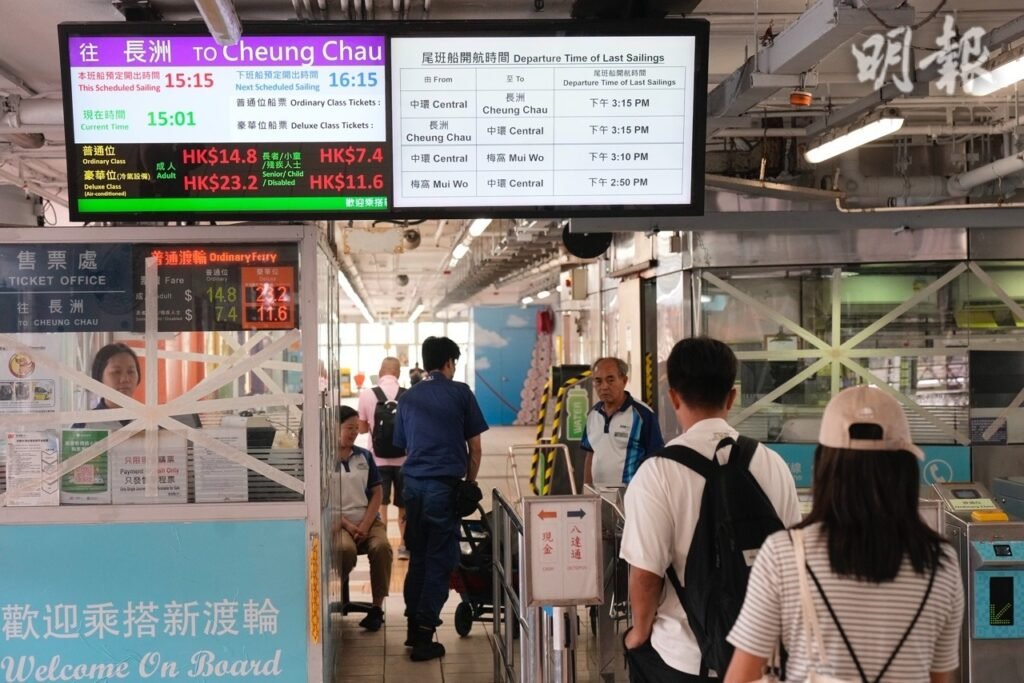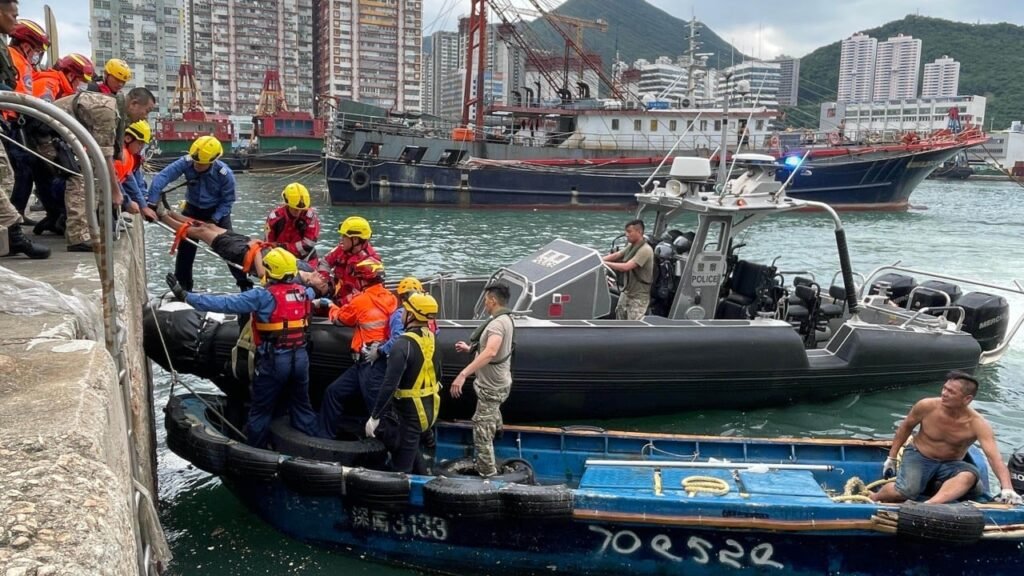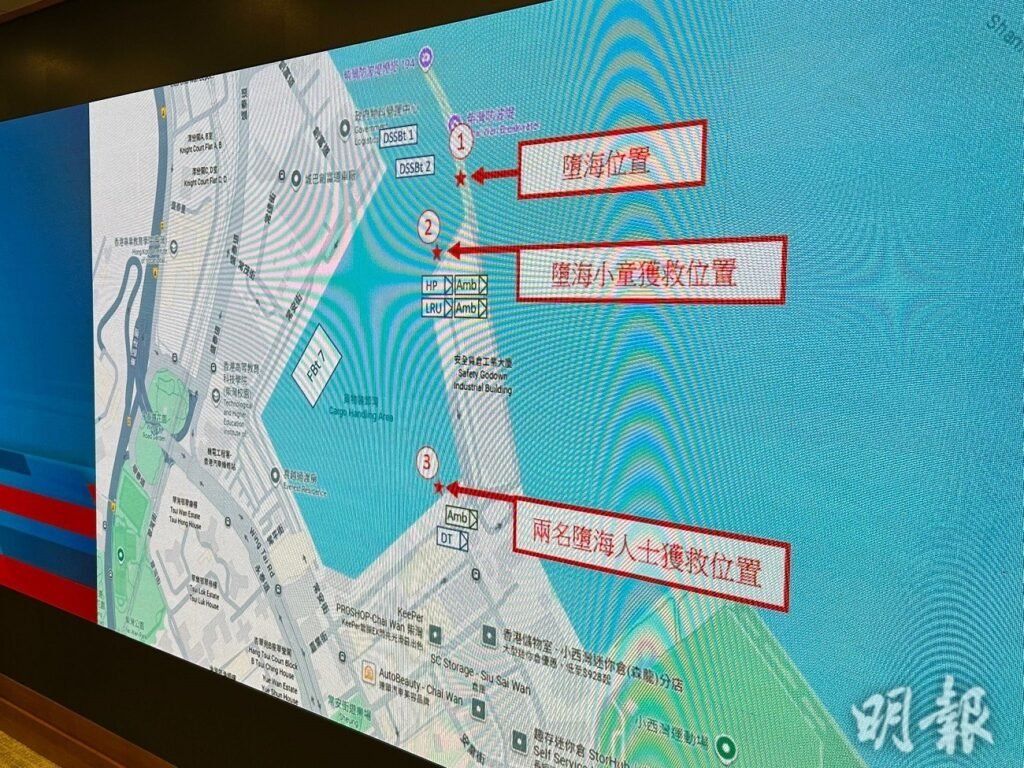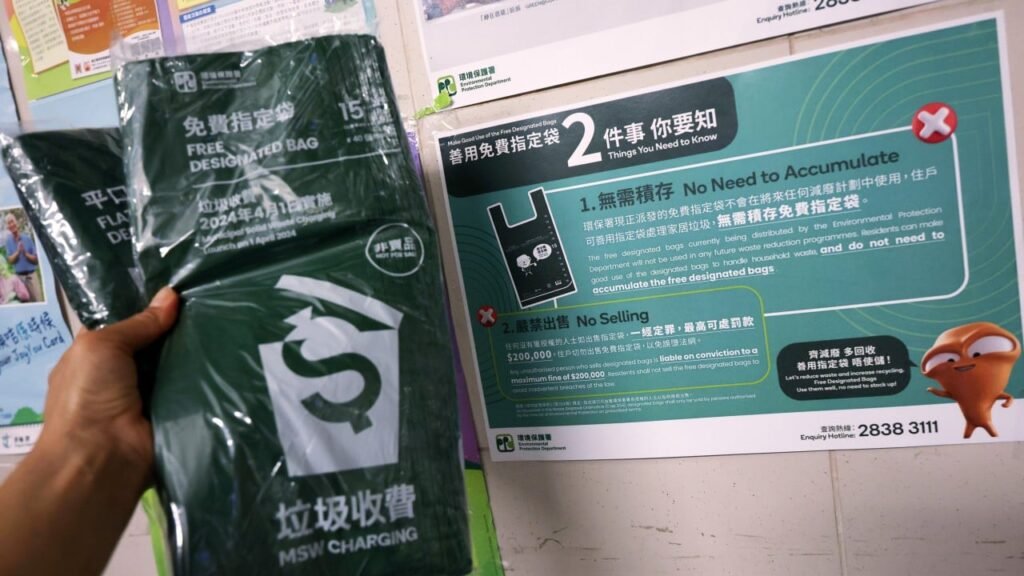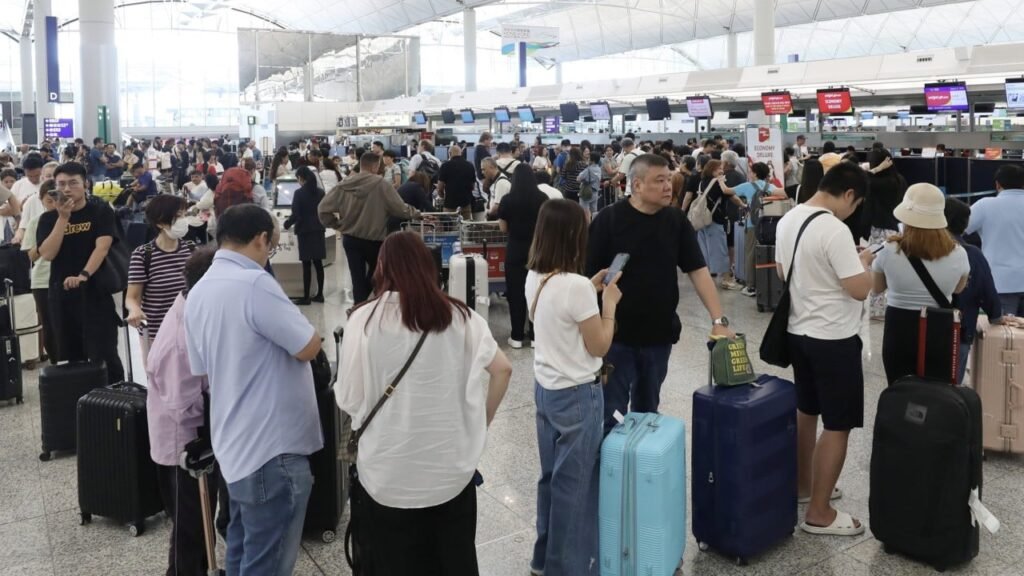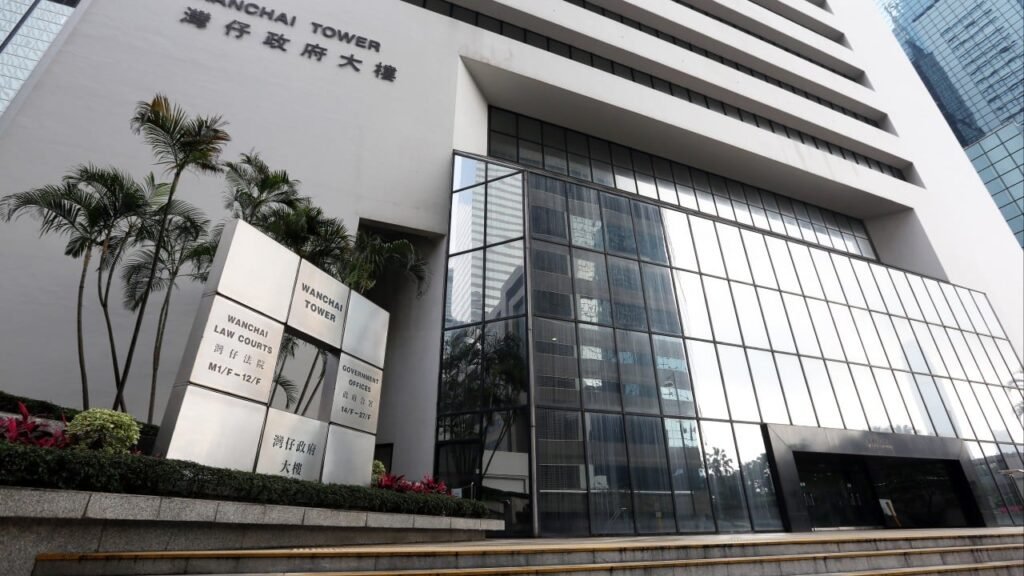Super Typhoon Ragasa, the strongest storm of this year, continues to churn towards China, bringing Hong Kong, Macau, and several other cities to a halt on Tuesday after battering the Philippines.
At least three people have been killed and thousands displaced as the typhoon triggered floods and landslides across the northern parts of the Philippines.
In northern Luzon, a 74-year-old man died after being trapped in a vehicle buried by mud and rocks in Benguet province, officials said. Two others were killed in Calayan town in Cagayan province, where the storm first made landfall.
Follow our live blog for the latest updates.
The disaster agency said more than 17,500 people were forced from their homes, while five others remain missing. Schools, government offices and transport services were suspended across 29 provinces, with ferries and domestic flights cancelled.
The storm – known locally as Nando – was packing maximum sustained winds of 215kmph and gusts up to 295kmph at landfall, according to the Philippine weather bureau PAGASA.
It has since moved west-northwest over the South China Sea and is forecast to strike southern China late Tuesday into Wednesday.
In Hong Kong, authorities raised the Signal 8 typhoon warning on Tuesday afternoon, the city’s third highest, closing schools and public offices and warning of hurricane-force winds and storm surges that could rival those seen during Super Typhoon Mangkhut in 2018.
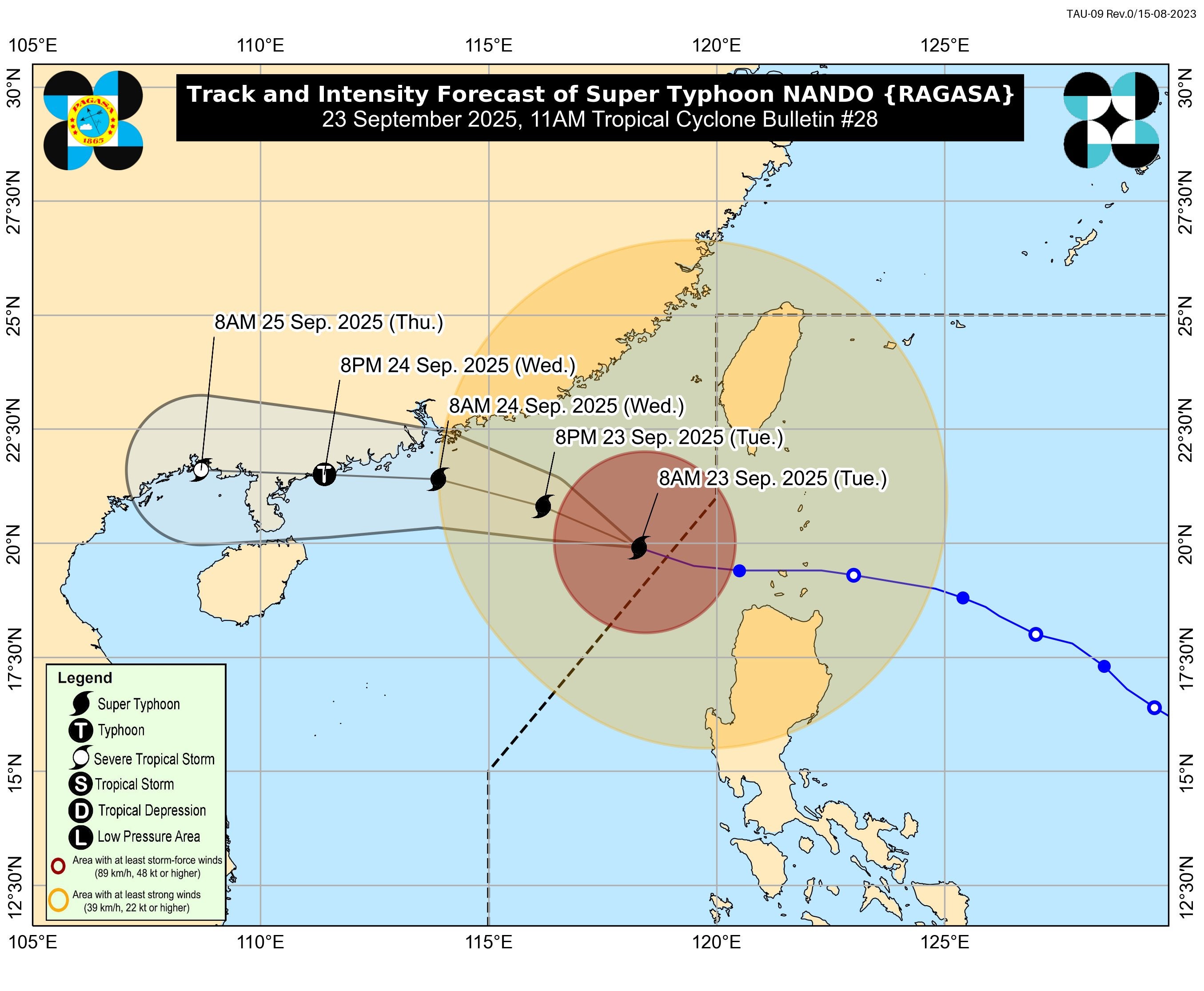
The Hong Kong airport said it will “continue operations” but warned passengers to expect “significant disruption” to flight operations from 6pm on Tuesday to Wednesday.
Around 700 flights have been cancelled, while ferries and some key highways are also shutting down, the South China Morning Post reported.
Analysis by The Independent of Flightradar24 data shows 86 regional departures to destinations in Asia have been grounded.
In addition, more than 30 long-haul departures are grounded, including two overnight flights to London Heathrow on Cathay Pacific and one on British Airways.
More than 100 flight departures from Hong Kong have been cancelled in just 10 hours, from 2pm to midnight local time on Tuesday afternoon and evening. An estimated 20,000 passengers are affected.
The Hong Kong Observatory said weather would “deteriorate rapidly” with “gale to storm-force winds” and high swells through Wednesday.
Photos and videos showed empty shelves in supermarkets as residents stockpiled essentials ahead of disruption.
The weather is expected to deteriorate rapidly later on Tuesday and the observatory said it will assess whether to issue a higher warning late on Tuesday or early Wednesday.

Across the border, Chinese state media said mass evacuations were underway in Guangdong and Fujian provinces, with almost 400,000 people being moved. More than 10 cities in Guangdong, including technology hub Shenzhen and coastal city Zhuhai had suspended work, transport services and schools due to warnings of storm surges and high waves. Trains and flights into several coastal cities have been suspended, and schools were told to remain closed.
Taiwan‘s government has evacuated more than 7,600 people from mountainous southern and eastern areas, while transport disruptions continued for a second day on Tuesday with 273 flights cancelled and some rail services suspended.
Ragasa is expected to maintain its strength for the next 24 hours before weakening slightly as it makes landfall in southern China, forecasters said.
China’s National Meteorological Centre is forecasting that the typhoon will make landfall between the cities of Zhuhai and Zhanjiang in Guangdong on Wednesday afternoon.
On Tuesday morning, the storm was packing maximum sustained winds of 185kmph and gusts up to 230kmph, according to the Philippine weather agency PAGASA.
It was expected to continue maintaining its intensity over the next 24 hours before weakening slightly as it approaches the Chinese coast.
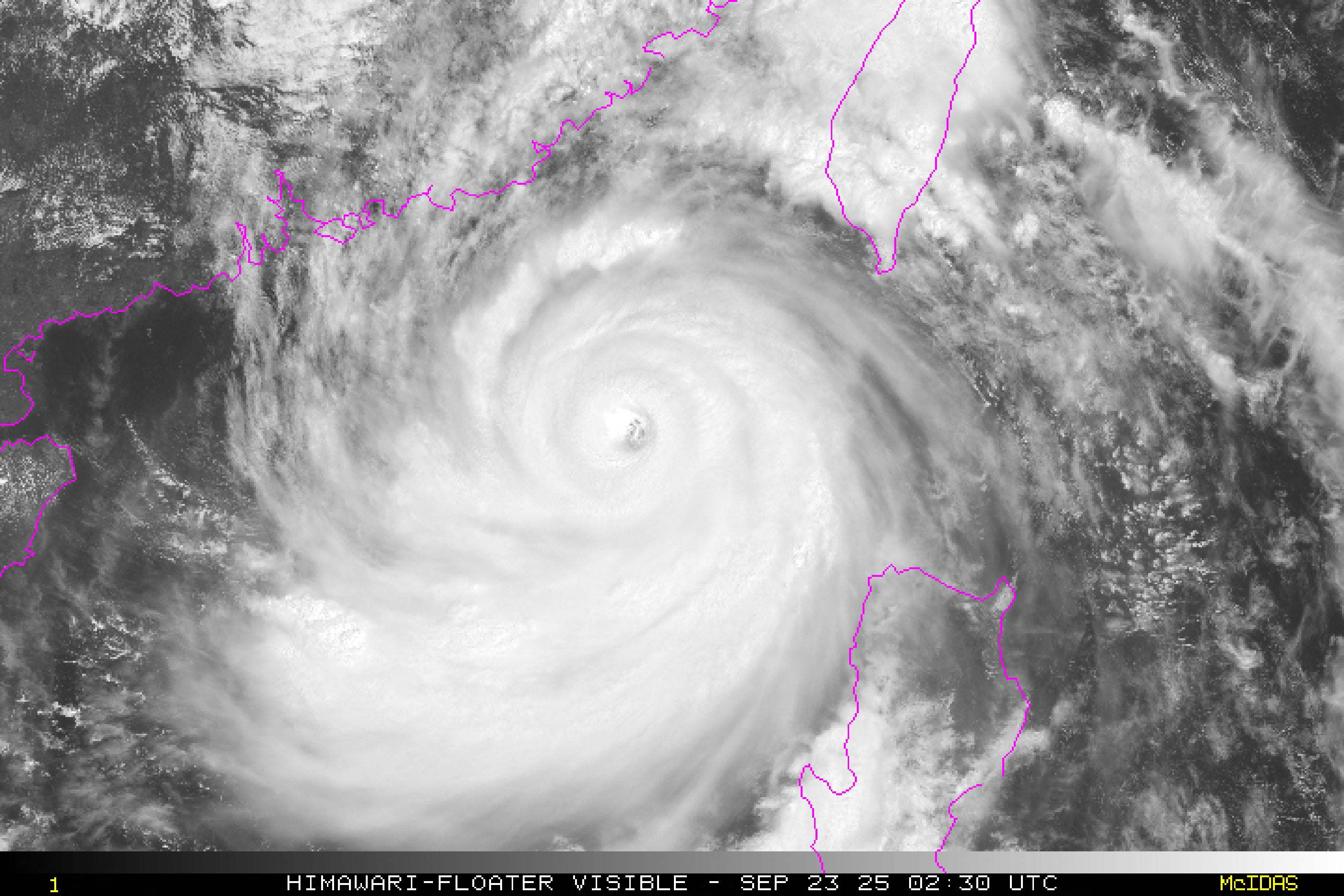
Scientists warn storms in the region are becoming more intense as global temperatures rise, placing millions of people across Asia’s typhoon belt at increasing risk.
Forecasters said Ragasa was moving northwest at 15kmph over very warm waters, an environment primed to fuel further intensification.
Meteorologists warn that the system could bring storm surges similar to those caused by Typhoon Mangkhut, which inundated parts of Hong Kong in 2018.
Ragasa isn’t the only storm intensifying in the Pacific Ocean this week. Super Typhoon Neoguri also reached category 4 equivalent strength. The early Sunday morning visible satellite images revealed that both typhoons were very large and undergoing rapid intensification.


